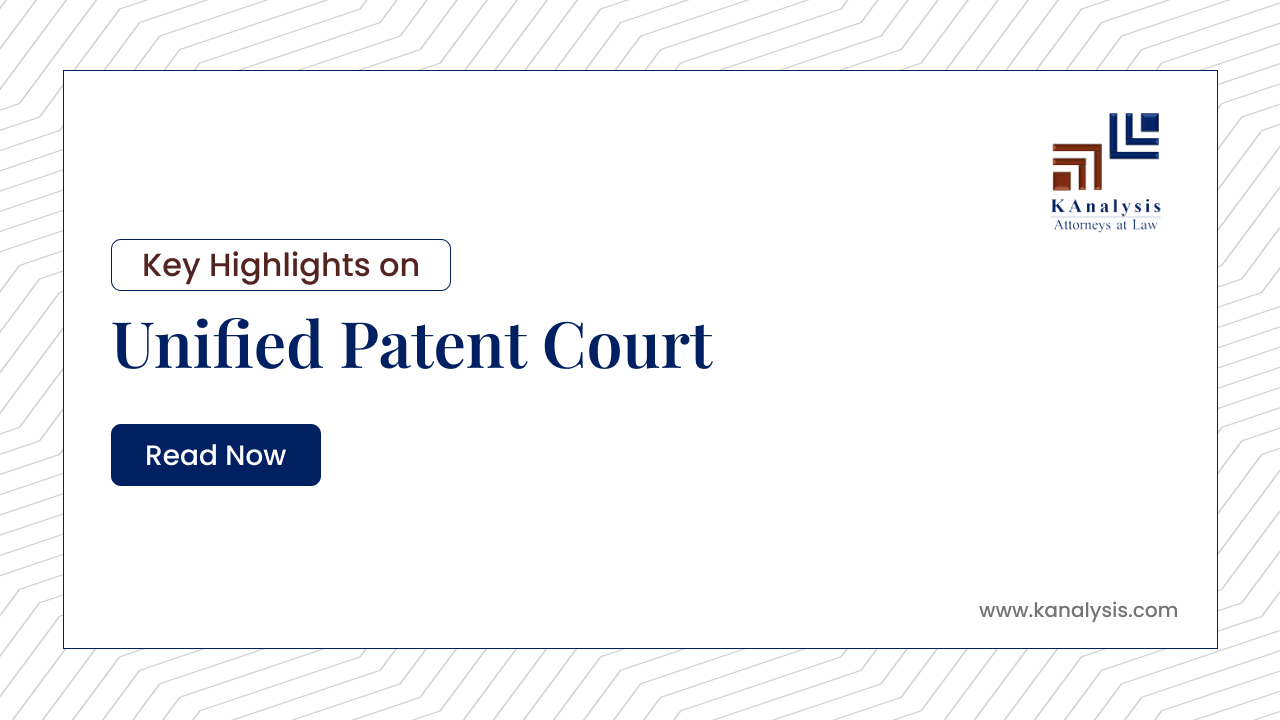INTRODUCTION
European Union has introduced a new patent right and enforcement system which is likely to commence on 1st June 2023. It was also announced that the start date for the sunrise opt-out period would be 1st March 2023. Under the UPC framework, a single court proceeding could result in simultaneous revocation of European Patents across various EU countries that has opted for UPC. Following the issuance of a European patent, the patent holder has the option to opt for unitary patent which will offer the same level of patent protection in up to 25 EU Member States. There are currently 17 states who have ratified the agreement and will be a part of this system when it is implemented.
PRESENT FRAMEWORK IN EU
Presently, an applicant can seek patent protection in various nations that are signatories to the European Patent Convention by filing and prosecuting a single patent application at the European Patent Office. The Convention states include all members of the European Union, along with U.K, Turkey, Switzerland and Norway. Once the European patent is granted, it only has effect in each individual member state in which the holder validates the patent and subsequently pays to maintain the patent. Enforcement actions of European Patents as well as the validity challenges to it (except oppositions) take place in the domestic courts member states individually and the following result is effective only in that member state.
KEY HIGHLIGHTS OF UPC
1. Jurisdiction– A Unified Patent Court will have jurisdiction over all European patents including current and upcoming patents which are designated to participating EU Member States and have also ratified the UPC Agreement (except Spain, Croatia, Poland and U.K) unless they have been opted out of the new court’s jurisdiction.
However, there is also a provision for a transitional period that will last at least 7 years but could be extended by up to another 7 years following an assessment after 5 years. During this phase, national courts will continue to have jurisdiction over European Patents that are not opted out as well as the UPC having jurisdiction over them in relation to validity and infringement. Following this period, the UPC will provide an exclusive court for taking all the cases.
2. Structure- The UPC will have three types of first instance court:
a. Local divisions.
b. Regional divisions- It is a form of local division acting as a UPC first instance court for various decisions at once where there are few patent cases in a year for the local division to deal with individually.
c. Central division– It will have 3 seats (Paris, Munich and 3rd is yet to be decided since U.K has opted-out) and has exclusive jurisdiction to deal with applications for declarations of non-infringement and revocation.
Also, Infringement actions can be brought in all 3 divisions.
3. Sunrise Period- It will begin on March 1, 2023 for three months. During this period, if a request is filed, patent owners can opt-out individual patents from the UPC and thereafter they will never become subject to the UPC unless the patent owner finalizes to withdraw the opt-out. Moreover, if opt-out is not registered and any other party brings a UPC action against an EP, the patent will be irreversibly included into the UPC. In order to avoid this situation, Opt-Out requests must be successfully registered in the UPC Registry during this phase.
4. Unitary Patent- Unitary Patent will be available in the form of a new independent right as an alternative to EP’s. Presently, after filling patent application at the EPO the applicant is supposed to decide within one month that whether it wish to select unitary protection or utilize the current system of national validations. If the unitary way is selected, it will provide total coverage across those EU member states who have chosen to be a part of the UPC.
5. Cost- It has introduced business friendly fees where for the first ten years, the cost of renewing a unitary patent will be less than EUR 5,000 and thereby an applicant will have to pay EUR 35,500 as a cumulative total over the full 20-year term. Whereas in the current system, the amounts payable add up to EUR 29,500 for the first ten years, and approximately EUR 1,59,000 for the term of 20 years.
A new compensation plan will cover costs associated with the translation of the patent application for small and marginal enterprises, individuals, non-profit entities universities, etc. if the application was submitted in an official language of European Union other than English, French, or German. When their Unitary Patent is registered, they will get a total payment of EUR 500.
6. Consideration for Licenses- The UPCA also mandates an exclusive licensee to give prior written notice to the patent owner before it can bring an infringement action and if the licensee does not want to be constrained in this way, it has to be addressed in the license.
MERITS AND DEMERITS
- It leads to cost savings to patent owners in Europe by doing away with the requirement for multiple validations, translations, and annuity payments.
- Moreover, there will be zero validation costs and official translation will also be limited to one.
- Also, the annual maintenance fees for the Unitary Patent are set to be about equal to or less than the total annuities if the patent owner wishes to opt-out of the UPC and validate the patent in more than approximately three to six individual EPC member States.
- This system will also benefit a patent holder to seek their patent across various important European states by a single enforcement action.
But this system also comes with an added disadvantage:
- If the action by any challenger is successful, it would invalidate the Unitary Patent across varoious European states.
- Transitional period can also take time.
Subscribe to our monthly newsletter here and read all our blogs here

